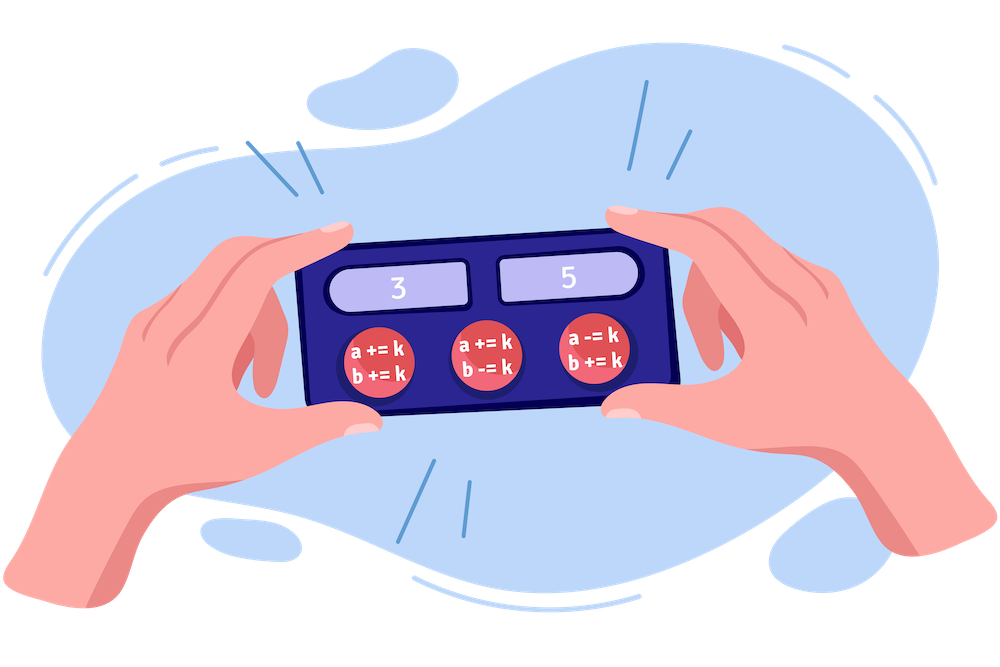Algorithm

William has two numbers a and b initially both equal to zero. William mastered performing three different operations with them quickly. Before performing each operation some positive integer k is picked, which is then used to perform one of the following operations: (note, that for each operation you can choose a new positive integer k)
- add number k to both a and b, or
- add number k to a and subtract k from b, or
- add number k to b and subtract k from a.
Note that after performing operations, numbers a and b may become negative as well.
William wants to find out the minimal number of operations he would have to perform to make a equal to his favorite number c and b equal to his second favorite number d.
Each test contains multiple test cases. The first line contains the number of test cases t (1≤t≤104). Description of the test cases follows.
The only line of each test case contains two integers c and d (0≤c,d≤109), which are William's favorite numbers and which he wants a and b to be transformed into.
For each test case output a single number, which is the minimal number of operations which William would have to perform to make a equal to c and b equal to d, or −1 if it is impossible to achieve this using the described operations.
6 1 2 3 5 5 3 6 6 8 0 0 0
-1 2 2 1 2 0
Let us demonstrate one of the suboptimal ways of getting a pair (3,5):
- Using an operation of the first type with k=1, the current pair would be equal to (1,1).
- Using an operation of the third type with k=8, the current pair would be equal to (−7,9).
- Using an operation of the second type with k=7, the current pair would be equal to (0,2).
- Using an operation of the first type with k=3, the current pair would be equal to (3,5).
Code Examples
#1 Code Example with C++ Programming
Code -
C++ Programming
#include<iostream>
using namespace std;
int main(){
int n, p, q, count;
cin>>n;
for(int i = 0; i < n; i++){
cin>>p;
cin>>q;
if((p+q)%2 != 0){
cout<<-1<<endl;
}
else if(p == 0 && q == 0){
cout<<0<<endl;
}
else if(p == q){
cout<<1<<endl;
}
else{
cout<<2<<endl;
}
}
return 0;
}Input
1 2
3 5
5 3
6 6
8 0
0 0
Output
2
2
1
2
0
Demonstration
Codeforcess Solution 1556-A A. A Variety of Operations ,C++, Java, Js and Python,1556-A,Codeforcess Solution
